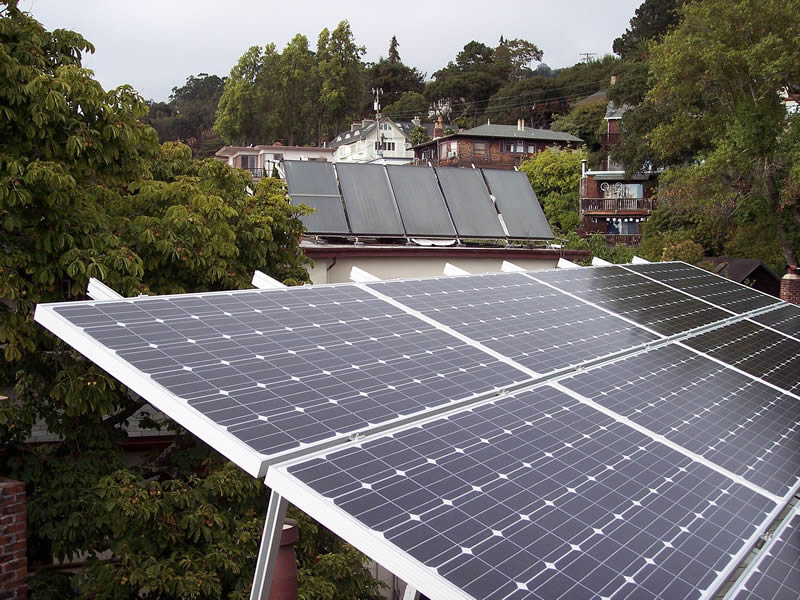The fundamental benefits of distributed energy are becoming more apparent, in very official ways, to governments, utilities and other entities involved in power generation and management. This is spurring investment in microgrids and grid-tied distributed energy projects, in the form of national goals for hybrid renewable microgrids, commitments to building thousands of distributed energy systems, generous incentives, large grants by international development agencies and new regulations that encourage distributed energy investment.

Last year, the share of new global energy added by distributed generation exceeded the amount added by new centralized power plants for the first time ever. According to Navigant Research, by 2026, microgrids are expected to supply three times more new power to the grid than centralized generation resources. The microgrid market is expected to reach $30 billion early in the next decade. Meanwhile, the International Energy Agency estimates that one third of all new power connections – presumably for people who currently have no access to electricity – will be enabled by microgrids, with most of those, nearly 300 million, in Africa and India.
So, it’s clear that we’re looking at an explosion of growth in microgrid technology. And already, energy experts are wondering what comes next. How will these yet-to-be-built microgrids adjust to changes in local circumstances such as population, load growth, and changes to energy prices? How will battery and PV panel degradation impact the system performance? These are different problems, but we need to start thinking about how to ensure that distributed energy projects can adapt to change in cost-effective ways.
Because, while electricity demand is leveling off in developed countries and creating financial headaches for utility managers, the developing world is another story. We can already predict that rapid growth in power needs will take place as energy access becomes widespread. For example, in sub-Saharan Africa and India especially, millions of people who have traditionally had no access to electricity whatsoever are now enjoying the benefits of compact solar home systems that provide small amounts of lighting for children to do their homework, for parents to charge their cell phones, and for small shopkeepers to stay open into the evening hours.
But soon, after a brief exposure to the miracle of electricity, the people in these communities will be striving to develop small businesses, and wondering how their electric resources can support more diverse and economically productive end uses. That means scaling up from solar home systems to microgrids, especially ones that provide better power quality than the central grid.
Microgrids / Minigrid Modularity
Now that microgrids and mini-grids are moving from single grant-funded pilot projects to portfolios of commercially financed systems, cost-effectiveness is the key to success for these promising technologies. Finding the least cost solution has always been the focus of the HOMER® software. Unlike the island utility market or the behind-the-meter market where there is measured load data, the energy access market has a further challenge because both the initial load is uncertain and the rate at which it will grow is even more difficult to anticipate.
Most energy access developers put a lot of effort into surveys of their customers about what appliances they expect to have and how much they will use them. In one Haitian project the designers installed a diesel-powered microgrid for an entire year, just to collect accurate load data before using HOMER Pro to model and develop the hybrid renewable project. To further complicate things, it is inherently difficult to predict what people who have not had electricity will do when they get it. Experience has shown that with the advent of reliable electricity, some villages rapidly expand their use, causing the load on the system to increase quickly.
Many funding agencies address this challenge by overbuilding the system in the first place. This is a logical solution given their financial aid processes because it is often much easier to get funding to build a new system than to expand an existing one. However, for a commercially-financed developer, the extra cost of overbuilding jeopardizes their financial viability.
Modular design is an obvious solution, especially since solar panels and batteries are inherently modular. Modularity allows the system to be expanded as needed, but it is not as easy as it sounds. Even though solar panels and batteries have modular characteristics, they are deployed in strings, and each panel or battery in the string must be similar. You cannot mix new batteries with old batteries in the same string. Even mixing them in separate strings requires controls and power conditioning equipment designed for that. Not all inverters and controllers can handle this, but it is promising to see the industry move in this direction.
HOMER Grid
At HOMER Energy, we have taken the same multi-year capability that exists in HOMER Pro and added it to HOMER Grid to facilitate modeling load growth, energy price changes, and component degradation in a microgrid, and provide a view of the future performance of the distributed energy system that is being designed. This allows users to run either HOMER software product over a project lifetime instead of just a single year. Now they can analyze detailed year-by-year impacts of utility rate escalation, load growth, fuel price increases, or the degradation of PV and battery performance.
We hope these changes will assist project developers, engineers, policy planners and others to future-proof distributed energy systems, so they can evolve as the world changes.
You can download and try full-featured versions of HOMER Grid.

You can also try our free online “Quick GRID” version HOMER QuickGrid. The Quick modeling options are simplified, but you will get useful reports that provide a good overview of the capabilities of HOMER Grid.


The professional article.. all is clear.. The modular power system it is a state of art to design . !